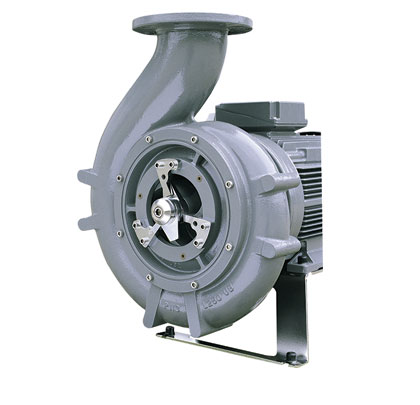At the Benton Utilities Wastewater Treatment Plant near Little Rock, Arkansas, a tough new Landia EradiGator Chopper Pump is ensuring that grease and scum are continuously churned up to prevent other smaller pumps in the process from blocking. The recirculating chopper pump was supplied by Landia with a custom-built bracket to fit into the bottom of a square tapered scum pit at Benton, where the scum pit receives skimmed-off wastewater from the plant’s clarifiers.
SCUM BUILD-UP A PROBLEM
Benton’s primary treatment is a four-step process beginning with the aeration basin, which supplies air to the mixture of primary wastewater, natural occurring bacteria, and microorganisms that consume the organic matter. Helpful bacteria and microorganisms growth is assisted by mixing air (aeration) with the concentrated microorganisms in the activated sludge and the wastewater. In the next step, four secondary clarifiers allow the bio-solids of biological mass (the microorganisms) to settle from the water by gravity.
Most of this “activated sludge,” 90 to 95 percent, is returned to the aeration basins to help maintain the amount of microorganisms needed to treat further wastewater, the remaining amount is pumped to the aerobic digester. However, trouble can occur is a layer of scum clogs the pump flow.
CLEARING THE WAY
Jonathan Buff, manager of Benton Utilities Wastewater Treatment Plant, notes, “We’re really using the Landia Chopper Pump more as a mixer so that a layer of scum can’t build up and block the existing smaller pumps we have on our rail system. Either way, it’s very effective.”
Once the path is clear from the clarifiers, decanters provide the next step for the bio-solids before removal from the system—either by pumping them through a filtered belt press or by liquid removal hauling them to a disposal site. In the final step, a physical process instantaneously neutralizes microorganisms using nothing but UV light as they pass by lamps submerged in the effluent. The UV lighting neutralizes the bacteria and pathogens where they can no longer reproduce, so the facility no longer uses chlorine to disinfect discharged water. Therefore, the process has no impact on the chemical composition or the dissolved oxygen content of the water.
STAYING ON THE MOVE
However, for the UV treatment to work, the final effluent must continuously flow past the lamps for disinfection. The facility monitors the bacteria and pathogen levels constantly, so a blockage could result in a risk of contamination.
“Previously, we did experience problems with blocked pumps, especially because we are working with just a 3-inch line,” Buff adds. “But the Landia Chopper Pump keeps everything churned up and on the move, with no problems for our existing units, which can now send the mixed scum to our digesters with no breakdowns or downtime.”
Landia’s EradiGator chopper pumps are widely used in lift stations and scum pits for mixing and macerating debris and grease, in order to prevent clogging of pumps and piping. ◆
Soren Rasmussen is the director of Landia, Inc. For more information about Landia’s range of applications, call 919.466.0603, email info@landiainc.com, or visit www.landiainc.com.
____________________________________________
MODERN PUMPING TODAY, July 2015
Did you enjoy this article?
Subscribe to the FREE Digital Edition of Modern Pumping Today Magazine!
![]()


